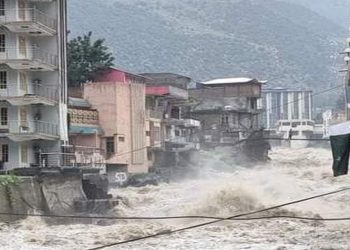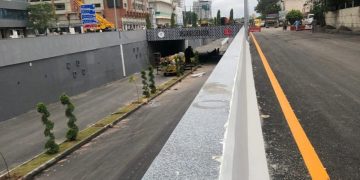Karachi: In a groundbreaking move, emergency motorbikes equipped with life-saving medical equipment have been introduced in Sindh, marking a significant addition to modern ambulance services.
These motorcycle ambulances aim to ensure prompt delivery of first aid in the event of accidents, particularly in the challenging conditions of traffic jams and narrow streets within the city.
Under the World Health Organization (WHO), the Health Department handed over 25 emergency bikes to the Sindh Integrated Emergency and Health Services (1122). Caretaker Health Minister Dr. Saad Khalid Niaz received the 25 bikes, each equipped with state-of-the-art medical tools, from WHO at the EPI Center and subsequently handed them over to 1122.
The motorbike ambulances come fully equipped with a fire extinguisher, mini medicine kit, emergency bag, oxygen mask, pulse oximeter, glucometer, oxygen cylinder key, nasal cannula, polyneck hard collar, stethoscope, CPR mask, nebulizer, and a dressing kit. With these resources, the motorcycle ambulance aims to reach patients within 5 to 8 minutes, providing immediate first aid before transporting the patient to the nearest ambulance.
In emergencies, patients will not only receive initial first aid but will also be treated on the spot with life-saving medication and CBR (chemical, biological, radiological) equipment.
During a press conference, Caretaker Health Minister Dr. Saad Khalid Niaz expressed that these devices and bikes would serve as a rapid response force for areas lacking vehicular access, thereby increasing response times. He highlighted the current need for 1100 emergency bikes, while the program currently possesses only 371 bikes.
Caretaker Health Minister Dr. Saad Khalid Niaz suggested that the World Health Organization implement its accountability system and monitor the utilization of supplies to ensure they are deployed appropriately.
Dr. Sara, the head of WHO Sindh, mentioned that paramedic staff would undergo a 15-day training, with emergency medical technicians regularly deploying these bikes on the streets starting in early April. The training is expected to continue for 3 to 6 months.
According to 1122 authorities, the primary objective of this service is to reach affected individuals promptly in case of accidents or illness in traffic jams, narrow roads, and challenging areas. Despite their outward appearance as normal heavy bikes, these vehicles are ambulances equipped with modern technology and medical facilities.


































